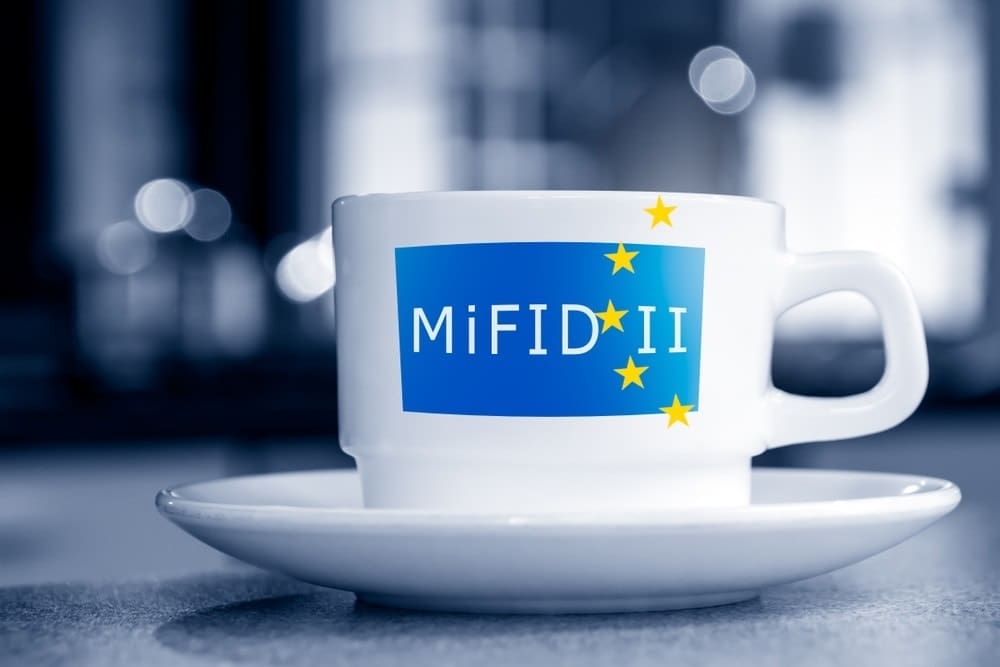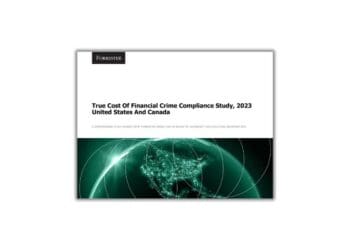Easing the Burden for Financial Services Firms
Financial services firms that are headquartered or do business with customers in the European Union (EU) have been subject to the Markets in Financial Instruments Directive (MiFID) since its enactment in 2007. But now there is a new wrinkle — an enhanced version of this cornerstone of capital markets regulation. This wrinkle is known as MiFID II, and it needs to be addressed with a combination of technology and common sense.
General Goals and Requirements
MiFID II was designed primarily to further strengthen investor protection and improve the functioning of financial markets by rendering them more efficient, resilient and transparent. The list of rules set forth by this legislation is extensive, but in a nutshell, MiFID II requires that financial firms act with honesty, fairness and professionalism at all times and in the best interests of their clients. Should questions about a trade or transaction arise or regulators approach firms with potentially credible complaints of malfeasance, the institutions must demonstrate that they understood clients’ investment criteria and offered suitable recommendations, promoted products that correlated with individual customers’ needs and investment objectives and shared relevant reports with their clients.
To promote the fulfillment of these objectives and requirements, MiFID II also includes recordkeeping and surveillance mandates. Firms must record all communications that are “intended to lead to a transaction,” including, but not limited to, electronic communications via email, social media platforms, wikis and collaborative tools such as Slack. Records are to be made available to clients for five years and to regulators for up to seven years, so all parties may reference them and so that transactions and employee behavior during client interactions can be analyzed by regulators or the firms themselves. Only durable media that cannot be altered or deleted — e.g., Write-Once-Read-Many (WORM) — may be used to store such records and they must be searchable, as well as available upon request.
Addressing Recordkeeping Requirements
While the recordkeeping requirements contained in MiFID II appear to be straightforward, attaining and maintaining compliance with them may prove complicated for most financial industry players. Virtually all communication is moving to the web, with a vast majority of customers demanding to receive information about everything they purchase — including financial instruments — online, rather than in written form. A personalized approach to sales is the name of the game; generic information, such as that found in brochures, no longer suffices. Moreover, firms are being compelled to offer a wider array of products across myriad investment classes — in fact, even mainstream companies are exploring cryptocurrency.
For most if not all firms, successfully grappling with such challenges — and remaining MiFID II-compliant on the recordkeeping front — will require deploying technology that allows for the capture of a rich compilation of information and for the creation of legally defensible — i.e., unalterable — records. Every step and aspect of a customer’s journey, as well as the content of every conversation with employees and every online interaction, must be documented. The same is true of interaction and contact that occurs via an app or with a chatbot.
But there is more to the equation than even this. The capabilities of this technology must transcend capturing the investment calculator accessed on a website. It should be capable of producing records that also detail which stage of the customer journey the client had reached when a particular interaction occurred, along with what investment advice was given. Archiving solutions should also allow companies to document which vehicle (e.g., human, chatbot, web search) was used to convey information, as well as which products and alternatives were offered.
Easing the MiFID II Compliance Burden
To supplement solutions that facilitate recordkeeping, firms might also consider technology which, by virtue of its features, lessens the logistical and financial burden of MiFID II compliance. Solutions that bake in one or more aspects of compliance — for instance, by automating the capture of the customer journey — are one key example. Also falling under this umbrella is technology that decreases the time customers need to purchase or receive financial products and services and that also minimizes the friction they encounter in doing so. Case in point: solutions that automate the steps entailed in adherence to the know your customer (KYC) and anti-money laundering (AML) requirements implemented to regulate the cryptocurrency space.
No matter how firms opt to leverage technology in addressing MiFID II, following a few best practices when choosing from available solutions will make compliance with the legislation an easier task. Perhaps most significantly, companies will need to select technology offerings that are “future-proof” and adaptable to a changing financial landscape. Why? The number of channels through which firms are sharing information with prospective and existing customers continues to increase, as does the volume of information being communicated. Companies will be unable to maintain a competitive edge unless their technology grows along with them.
Firms in the midst of deploying technology to foster MiFID II compliance should compare their solution deployment plans to initiatives undertaken by companies of a similar size, rather than those by larger organizations. In many ways, the technology needs of small companies differ significantly from those of their larger counterparts. Larger firms may find themselves unable to scale certain solutions to meet their needs, and vice versa.
Finally, it is imperative that firms invest in the best technology their budgets will bear. This demonstrates to customers that their money is taken seriously — and to regulators that MiFID II compliance is high on the firm’s radar. And that is, without question, where it should remain.



 Kevin Gibson is CEO & Chairman of
Kevin Gibson is CEO & Chairman of 






